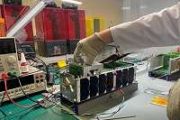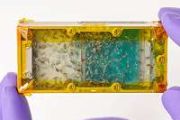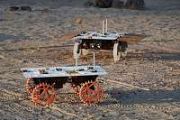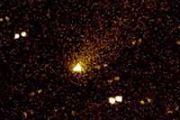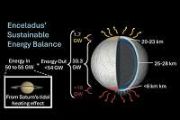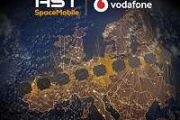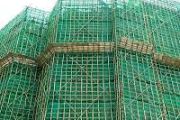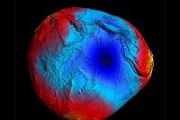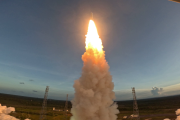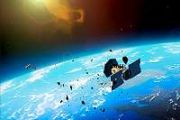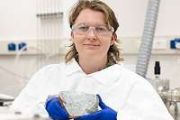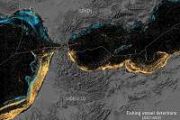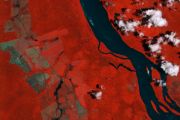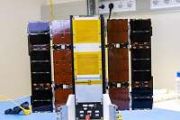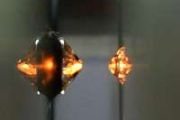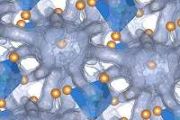
Copernical Team
Luca Parmitano presents the European Astronauts’ Manifesto
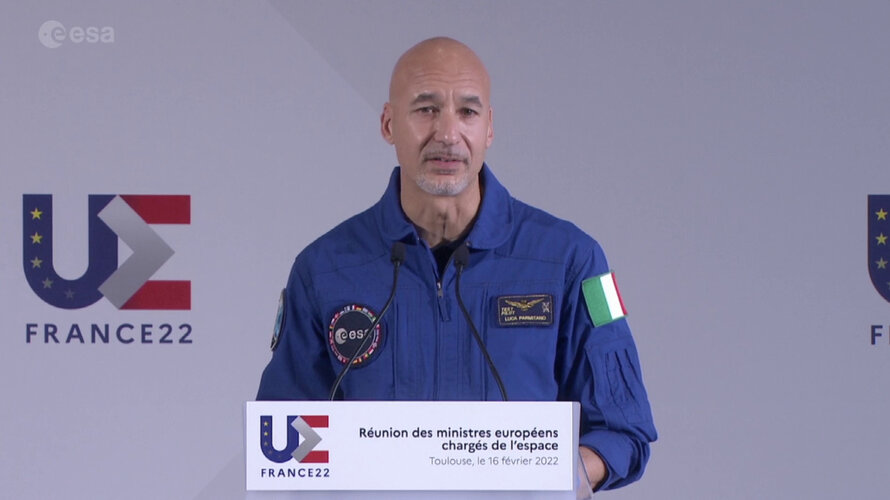 Video:
00:08:47
Video:
00:08:47
ESA astronaut Luca Parmitano presents the European Astronauts’ Manifesto during the Space Summit in Toulouse, on 16 February 2022.
Josef Aschbacher’s speech at the ESA Council meeting
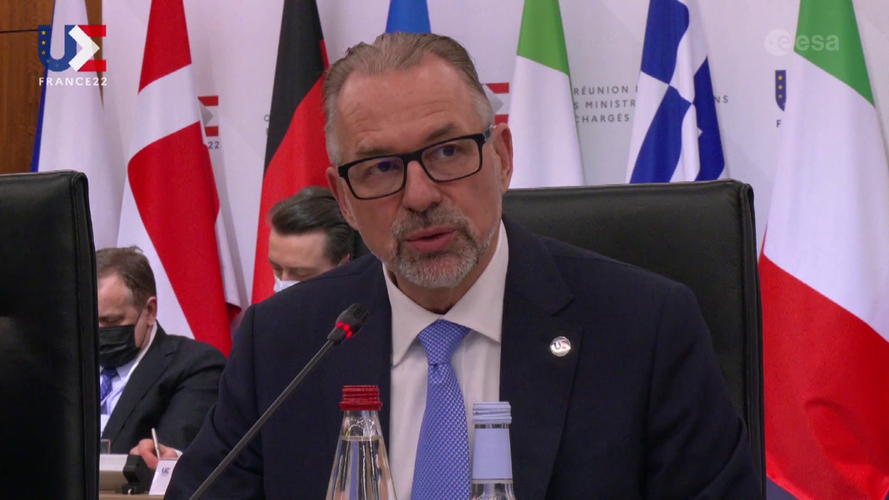 Video:
00:12:41
Video:
00:12:41
ESA Director General Josef Aschbacher speaks at the start of the ESA Council Meeting at Ministerial Level, part of the Space Summit in Toulouse, on 16 February 2022.
Gaia reveals a new member of the Milky Way family
 Image:
Image:
Our galaxy, the Milky Way, began forming around 12 billion years ago. Since then, it has been growing in both mass and size through a sequence of mergers with other galaxies.
Perhaps most exciting is that this process has not quite finished, and by using data from ESA’s Gaia spacecraft, astronomers can see it taking place. This in turn allows to reconstruct the history of our galaxy, revealing the ‘family tree’ of smaller galaxies that has helped make the Milky Way what it is today.
The latest work on this subject comes from Khyati Malhan, a Humboldt Fellow at the
Eutelsat and Marlink extend partnership for GEO Ku-band satellite capacity
 Eutelsat Communications and Marlink, the Smart Network Company, have agreed to extend their Global Maritime Partnership, initially signed in 2019, to support expansion in Africa and the Middle East (Red Sea and the Gulf) and to integrate the Americas and Asia into the portfolio of Eutelsat satellite capacity used by Marlink.
Marlink is the leading maritime VSAT operator in the world, with
Eutelsat Communications and Marlink, the Smart Network Company, have agreed to extend their Global Maritime Partnership, initially signed in 2019, to support expansion in Africa and the Middle East (Red Sea and the Gulf) and to integrate the Americas and Asia into the portfolio of Eutelsat satellite capacity used by Marlink.
Marlink is the leading maritime VSAT operator in the world, with Homegrown spacecraft is putting Perth on Space Race map
 Perth researchers made history when they sent the first WA designed and built satellite into space last year.
The Binar-1 - named after the Noongar word for fireball - was developed by Curtin University's Space Science and Technology Centre.
The Binar Space Program team plan to deploy six more locally made satellites in the next 2 years.
So why is WA launching satellites and wh
Perth researchers made history when they sent the first WA designed and built satellite into space last year.
The Binar-1 - named after the Noongar word for fireball - was developed by Curtin University's Space Science and Technology Centre.
The Binar Space Program team plan to deploy six more locally made satellites in the next 2 years.
So why is WA launching satellites and wh Quantum tech in space?
 Operating quantum technology in challenging environments, such as space, has moved a significant step forward after physicists working at the University of Sussex have developed a monitoring and control system blueprint for quantum devices and experiments.
The system is presented in a peer reviewed paper published in Quantum Science and Technology. The paper details how the University's Qu
Operating quantum technology in challenging environments, such as space, has moved a significant step forward after physicists working at the University of Sussex have developed a monitoring and control system blueprint for quantum devices and experiments.
The system is presented in a peer reviewed paper published in Quantum Science and Technology. The paper details how the University's Qu Studying the next interstellar interloper with Webb
 One of the most exciting findings in planetary science in recent years is the discovery of interstellar objects passing through our solar system. So far, astronomers have confirmed only two of these interlopers from other star systems - 1I/'Oumuamua in 2017 and 2I/Borisov in 2018 - but many, many more are thought to exist. Scientists have had only limited ability to study these objects once disc
One of the most exciting findings in planetary science in recent years is the discovery of interstellar objects passing through our solar system. So far, astronomers have confirmed only two of these interlopers from other star systems - 1I/'Oumuamua in 2017 and 2I/Borisov in 2018 - but many, many more are thought to exist. Scientists have had only limited ability to study these objects once disc Psyche, the iron giant of asteroids, may be less iron than researchers thought
 The asteroid 16 Psyche, which NASA intends to visit with a spacecraft in 2026, may be less heavy metal and more hard rock than scientists have surmised, according to a new study by researchers from Brown and Purdue universities.
Psyche, which orbits the sun in the asteroid belt between Mars and Jupiter, is the largest of the M-type asteroids, which are composed chiefly of iron and nickel a
The asteroid 16 Psyche, which NASA intends to visit with a spacecraft in 2026, may be less heavy metal and more hard rock than scientists have surmised, according to a new study by researchers from Brown and Purdue universities.
Psyche, which orbits the sun in the asteroid belt between Mars and Jupiter, is the largest of the M-type asteroids, which are composed chiefly of iron and nickel a NASA's IXPE sends first science image
 In time for Valentine's Day, NASA's Imaging X-Ray Polarimetry Explorer which launched Dec. 9, 2021, has delivered its first imaging data since completing its month-long commissioning phase. All instruments are functioning well aboard the observatory, which is on a quest to study some of the most mysterious and extreme objects in the universe.
IXPE first focused its X-ray eyes on Cassiopeia
In time for Valentine's Day, NASA's Imaging X-Ray Polarimetry Explorer which launched Dec. 9, 2021, has delivered its first imaging data since completing its month-long commissioning phase. All instruments are functioning well aboard the observatory, which is on a quest to study some of the most mysterious and extreme objects in the universe.
IXPE first focused its X-ray eyes on Cassiopeia JILA atomic clocks measure Einstein's general relativity at millimeter scale
 JILA physicists have measured Albert Einstein's theory of general relativity, or more specifically, the effect called time dilation, at the smallest scale ever, showing that two tiny atomic clocks, separated by just a millimeter or the width of a sharp pencil tip, tick at different rates.
The experiments, described in the Feb. 17 issue of Nature, suggest how to make atomic clocks 50 times
JILA physicists have measured Albert Einstein's theory of general relativity, or more specifically, the effect called time dilation, at the smallest scale ever, showing that two tiny atomic clocks, separated by just a millimeter or the width of a sharp pencil tip, tick at different rates.
The experiments, described in the Feb. 17 issue of Nature, suggest how to make atomic clocks 50 times 
